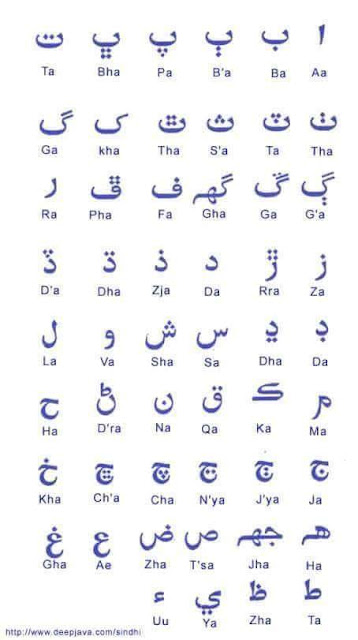*"प्राचीन स्वास्थ्य दोहावली"*
पानी में गुड डालिए,
बीत जाए जब रात!
सुबह छानकर पीजिए,
अच्छे हों हालात!!
धनिया की पत्ती मसल,
बूंद नैन में डार!
दुखती अँखियां ठीक हों,
पल लागे दो-चार!!
ऊर्जा मिलती है बहुत,
पिएं गुनगुना नीर!
कब्ज खतम हो पेट की,
मिट जाए हर पीर!!
प्रातः काल पानी पिएं,
घूंट-घूंट कर आप!
बस दो-तीन गिलास है,
हर औषधि का बाप!!
ठंडा पानी पियो मत,
करता क्रूर प्रहार!
करे हाजमे का सदा,
ये तो बंटाढार!!
भोजन करें धरती पर,
अल्थी पल्थी मार!
चबा-चबा कर खाइए,
वैद्य न झांकें द्वार!!
प्रातः काल फल रस लो,
दुपहर लस्सी-छांस!
सदा रात में दूध पी,
सभी रोग का नाश!!
दही उडद की दाल सँग,
पपीता दूध के संग!
जो खाएं इक साथ में,
जीवन हो बदरंग!!
प्रातः- दोपहर लीजिये,
जब नियमित आहार! तीस मिनट की नींद लो,
रोग न आवें द्वार!!
भोजन करके रात में,
घूमें कदम हजार!
डाक्टर, ओझा, वैद्य का ,
लुट जाए व्यापार !!
देश,भेष,मौसम यथा,
हो जैसा परिवेश!
वैसा भोजन कीजिये,
कहते सखा सुरेश!!
इन बातों को मान कर,
जो करता उत्कर्ष!
जीवन में पग-पग मिले,
उस प्राणी को हर्ष!!
घूट-घूट पानी पियो,
रह तनाव से दूर!
एसिडिटी, या मोटापा,
होवें चकनाचूर!!
अर्थराइज या हार्निया,
अपेंडिक्स का त्रास!
पानी पीजै बैठकर,
कभी न आवें पास!!
रक्तचाप बढने लगे,
तब मत सोचो भाय!
सौगंध राम की खाइ के,
तुरत छोड दो चाय!!
सुबह खाइये कुवंर-सा,
दुपहर यथा नरेश!
भोजन लीजै रात में,
जैसे रंक सुरेश!!
देर रात तक जागना,
रोगों का जंजाल!
अपच,आंख के रोग सँग,
तन भी रहे निढाल!!
टूथपेस्ट-ब्रश छोडकर,
हर दिन दोनो जून!
दांत करें मजबूत यदि,
करिएगा दातून!!
हल्दी तुरत लगाइए,
अगर काट ले श्वान!
खतम करे ये जहर को,
कह गए कवि सुजान!!
मिश्री, गुड, खांड,
ये हैं गुण की खान!
पर सफेद शक्कर सखा,
समझो जहर समान!!
चुंबक का उपयोग कर,
ये है दवा सटीक!
हड्डी टूटी हो अगर,
अल्प समय में ठीक!!
दर्द, घाव, फोडा, चुभन,
सूजन, चोट पिराइ!
बीस मिनट चुंबक धरौ,
पिरवा जाइ हेराइ!!
हँसना, रोना, छींकना,
भूख, प्यास या प्यार!
क्रोध, जम्हाई रोकना,
समझो बंटाढार!!
सत्तर रोगों कोे करे,
चूना हमसे दूर!
दूर करे ये बाझपन,
सुस्ती अपच हुजूर!!
यदि सरसों के तेल में,
पग नाखून डुबाय!
खुजली, लाली, जलन सब,
नैनों से गुमि जाय!!
भोजन करके जोहिए,
केवल घंटा डेढ!
पानी इसके बाद पी,
ये औषधि का पेड!!
जो भोजन के साथ ही,
पीता रहता नीर!
रोग एक सौ तीन हों,
फुट जाए तकदीर!!
पानी करके गुनगुना,
मेथी देव भिगाय!
सुबह चबाकर नीर पी,
रक्तचाप सुधराय!!
अलसी, तिल, नारियल,
घी सरसों का तेल!
यही खाइए नहीं तो,
हार्ट समझिए फेल!!
पहला स्थान सेंधा नमक,
पहाड़ी नमक सु जान!
श्वेत नमक है सागरी,
ये है जहर समान!!
तेल वनस्पति खाइके,
चर्बी लियो बढाइ!
घेरा कोलेस्टरॉल तो,
आज रहे चिल्लाइ!!
अल्यूमिन के पात्र का,
करता है जो उपयोग!
आमंत्रित करता सदा ,
वह अडतालीस रोग!!
फल या मीठा खाइके,
तुरत न पीजै नीर!
ये सब छोटी आंत में,
बनते विषधर तीर!!
चोकर खाने से सदा,
बढती तन की शक्ति!
गेहूँ मोटा पीसिए,
दिल में बढे विरक्ति!!
नींबू पानी का सदा,
करता जो उपयोग!
पास नहीं आते कभी,
यकृति-आंत के रोग!!
दूषित पानी जो पिए,
बिगडे उसका पेट!
ऐसे जल को समझिए,
सौ रोगों का गेट!!
रोज मुलहठी चूसिए,
कफ बाहर आ जाय!
बने सुरीला कंठ भी,
सबको लगत सुहाय!!
भोजन करके खाइए,
सौंफ, गुड, अजवान!
पत्थर भी पच जायगा,
जानै सकल जहान!!
लौकी का रस पीजिए,
चोकर युक्त पिसान!
तुलसी, गुड, सेंधा नमक,
हृदय रोग निदान!!
हृदय रोग, खांसी और
आंव करें बदनाम!
दो अनार खाएं सदा,
बनते बिगडे काम!!
चैत्र माह में नीम की,
पत्ती हर दिन खावे !
ज्वर, डेंगू या मलेरिया,
बारह मील भगावे !!
सौ वर्षों तक वह जिए,
लेत नाक से सांस!
अल्पकाल जीवें, करें,
मुंह से श्वासोच्छ्वास!!
सितम, गर्म जल से कभी,
करिये मत स्नान!
घट जाता है आत्मबल,
नैनन को नुकसान!!
हृदय रोग से आपको,
बचना है श्रीमान!
सुरा, चाय या कोल्ड्रिंक,
का मत करिए पान!!
अगर नहावें गरम जल,
तन-मन हो कमजोर!
नयन ज्योति कमजोर हो,
शक्ति घटे चहुंओर!!
तुलसी का पत्ता करें,
यदि हरदम उपयोग!
मिट जाते हर उम्र में,
तन के सारे रोग!!
_____......_____
